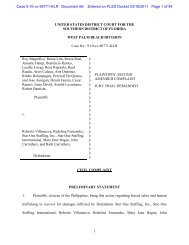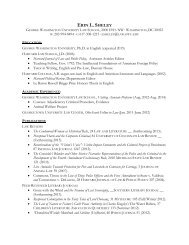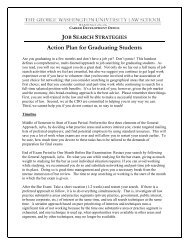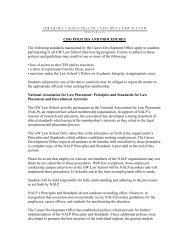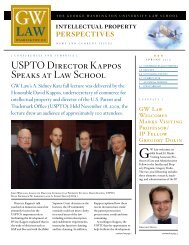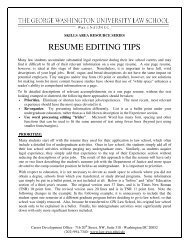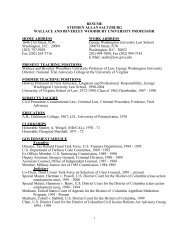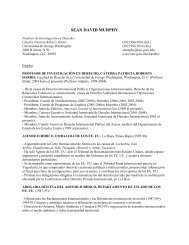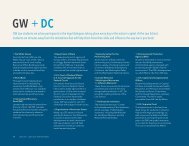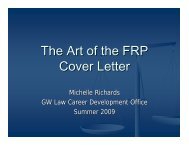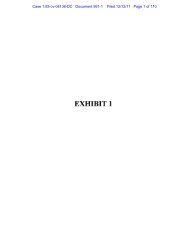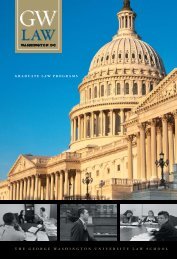CLE Materials for Panel #1 - George Washington University Law ...
CLE Materials for Panel #1 - George Washington University Law ...
CLE Materials for Panel #1 - George Washington University Law ...
You also want an ePaper? Increase the reach of your titles
YUMPU automatically turns print PDFs into web optimized ePapers that Google loves.
WILMARTH<br />
4/1/2011 1:11 PM<br />
2011] The Dodd-Frank Act 1015<br />
failures of SIFIs and their accompanying pressures <strong>for</strong> governmental<br />
protection of systemically important creditors. 268<br />
D. Dodd-Frank Does Not Require SIFIs to Pay Insurance Premiums<br />
to Pre-Fund the Orderly Liquidation Fund<br />
As noted above, Dodd-Frank establishes an Orderly Liquidation<br />
Fund (OLF) to provide financing <strong>for</strong> the FDIC’s liquidation of failed<br />
SIFIs. However, Dodd-Frank does not require LCFIs to pay<br />
assessments <strong>for</strong> the purpose of pre-funding the OLF. 269 Instead,<br />
Dodd-Frank authorizes the FDIC borrow from the Treasury to<br />
provide the necessary funding <strong>for</strong> the OLF after a SIFI is placed in<br />
receivership. 270<br />
The FDIC must repay any borrowings from the Treasury within<br />
five years, unless the Treasury determines that an extension of the<br />
repayment period is “necessary to avoid a serious adverse effect on<br />
the financial system of the United States.” 271 Dodd-Frank authorizes<br />
the FDIC to repay borrowings from the Treasury by making ex post<br />
assessments on (1) creditors who received preferential payments (to<br />
the extent of such preferences), (2) nonbank SIFIs supervised by the<br />
FRB under Dodd-Frank, (3) BHCs with assets of $50 billion or more,<br />
and (4) other financial companies with assets of $50 billion or<br />
more. 272 Dodd-Frank requires the FDIC to determine the appropriate<br />
assessment levels <strong>for</strong> nonbank SIFIs, large BHCs and other large<br />
financial companies by (1) setting a “graduated basis” <strong>for</strong> assessments<br />
that requires larger and riskier financial companies to pay higher rates<br />
and (2) establishing a “risk matrix” that incorporates<br />
recommendations from the FSOC. 273<br />
Thus, Dodd-Frank relies on an ex post funding system <strong>for</strong><br />
financing liquidations of SIFIs. That was not the case with early<br />
versions of the legislation. The bill passed by the House of<br />
Representatives would have authorized the FDIC to pre-fund the OLF<br />
by collecting up to $150 billion in risk-based assessments from<br />
268 Id. at 22–23; JOHNSON &KWAK, supra note 137, at 205–08.<br />
269 See supra notes 199–200 and accompanying text.<br />
270 Dodd-Frank Act § 210(n)(5), (6); see also supra note 199 and accompanying text<br />
(discussing the FDIC’s authority to borrow from the Treasury).<br />
271 Dodd-Frank Act § 210(n)(9)(B), (o)(1)(B), (C) (quote).<br />
272 § 210(o)(1).<br />
273 § 210(o)(4).




